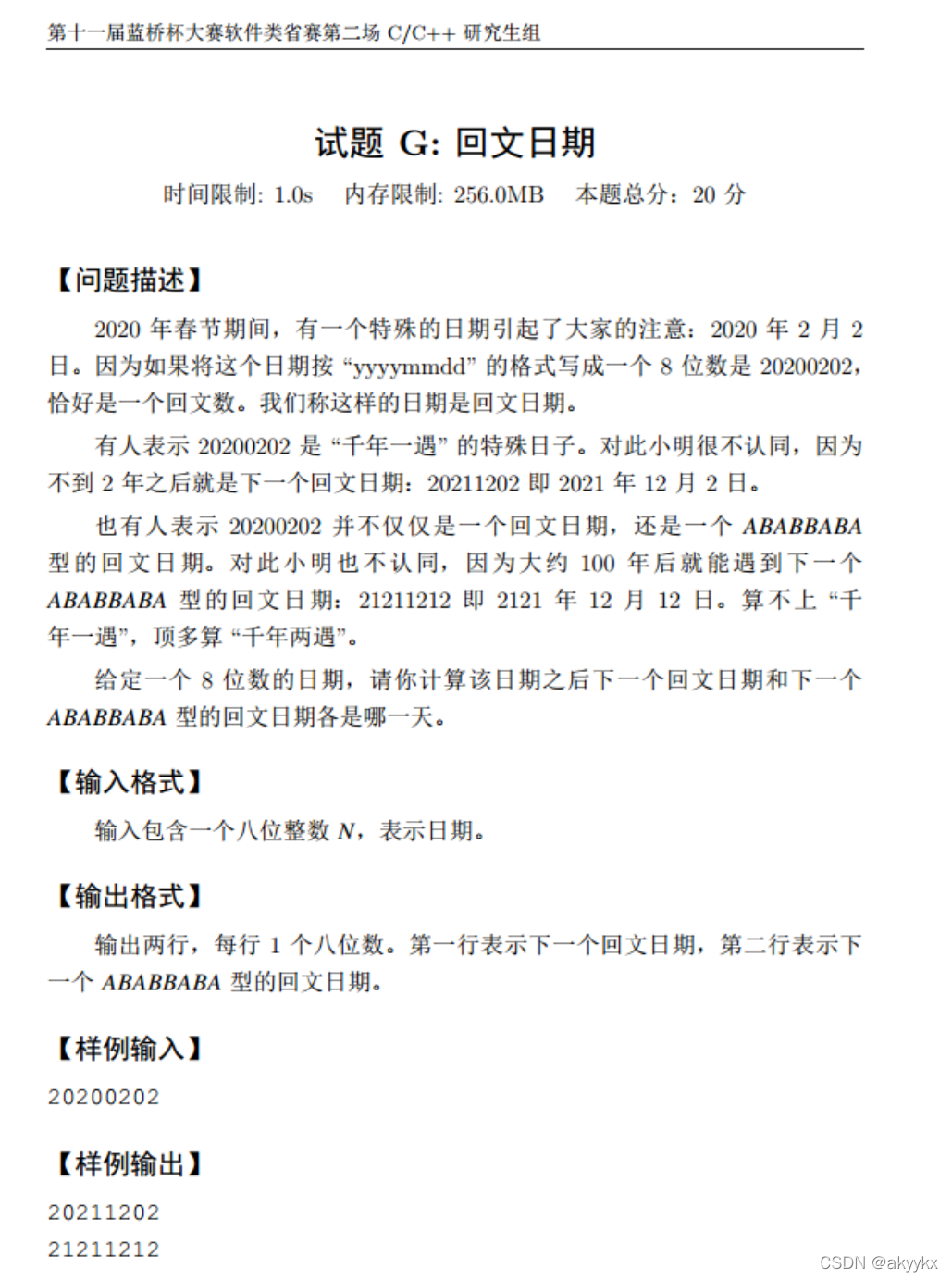
代码:
/*
(year % 4 == 0 && year % 100) || (year % 400 == 0)
是闰年:
1.整除4但不整除100
2.整除400
闰年和平年的差别在第2月:
闰年的第二月有29天,平年的第二月28天
*/
#include<iostream>
#include<cstring>
#include<algorithm>
#include<cstdio>
#define N 5
using namespace std;
int days[13] = {0,31,28,31,30,31,30,31,31,30,31,30,31};
int check_vaild(int n)
{
int year = n / 10000 , month = n % 10000 / 100 , day = n % 100;
if(month < 0 || month > 12) return false;//月份超范围
if(day < 0 || (day > days[month] && month != 2)) return false;//先不判断第二个月的天数是否超出范围
//单独判断第二个月的天数:分为闰年和平年
int x = 0;
if(month == 2)
x = year % 4 == 0 && year % 100 || year % 400 == 0;
if(day > days[month] + x) return false;
return true;
}
int check_ABAB(int n)
{
int a = n / 10000000 , b = n / 1000000 % 10 , c = n /100000 % 10 , d = n / 10000 % 10;
if(a == c && b == d && a != b) return true;
return false;
}
int main()
{
int n;
scanf("%d",&n);
/*不知道下一个回文日期的年份(即前四位数),
就把前四位数作为一个整体枚举,枚举的时候同时把回文串拼接在后面存储在x里
*/
int falg = 1;
for(int i = n / 10000;i < 100000;i ++)//i是前四位数
{
int x = i , t = i;
for(int j = 0;j < 4;j ++)
x = x*10 + t%10 , t /= 10;//2020 * 10 + (2020) % 10 = 20200 把t的最后一位数去掉
if(check_vaild(x) && x > n && falg)
{
printf("%d\n",x);
falg = 0;//找到下一个回文串后,标志结束
}
if(check_vaild(x) && check_ABAB(x) && x > n)
{
printf("%d\n",x);
break;
}
}
return 0;
}
?